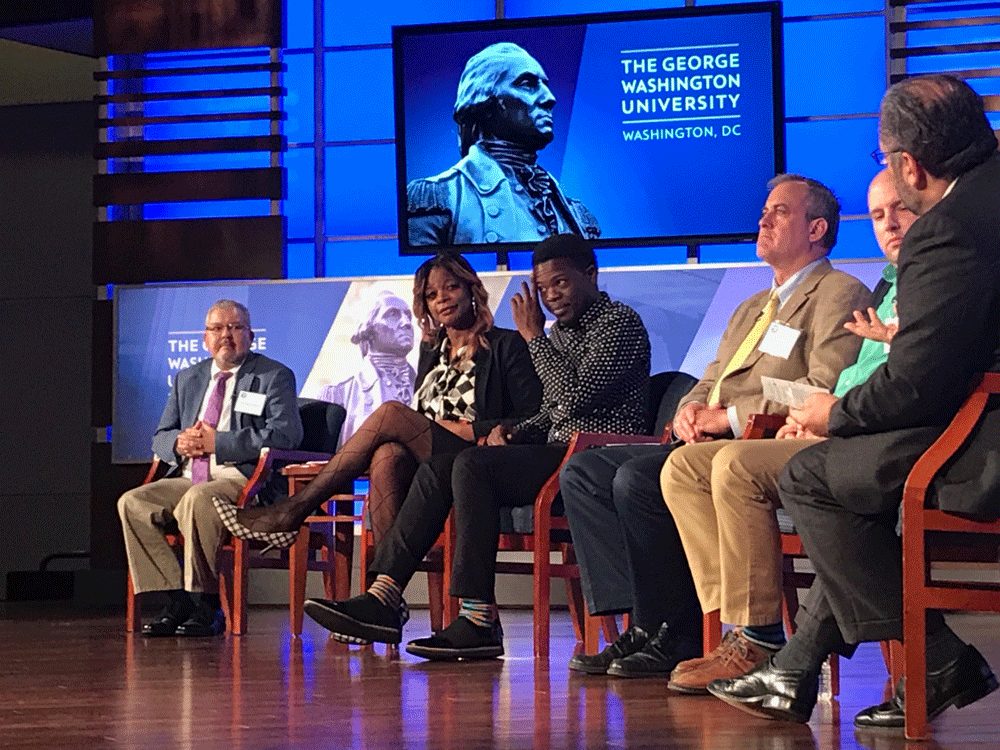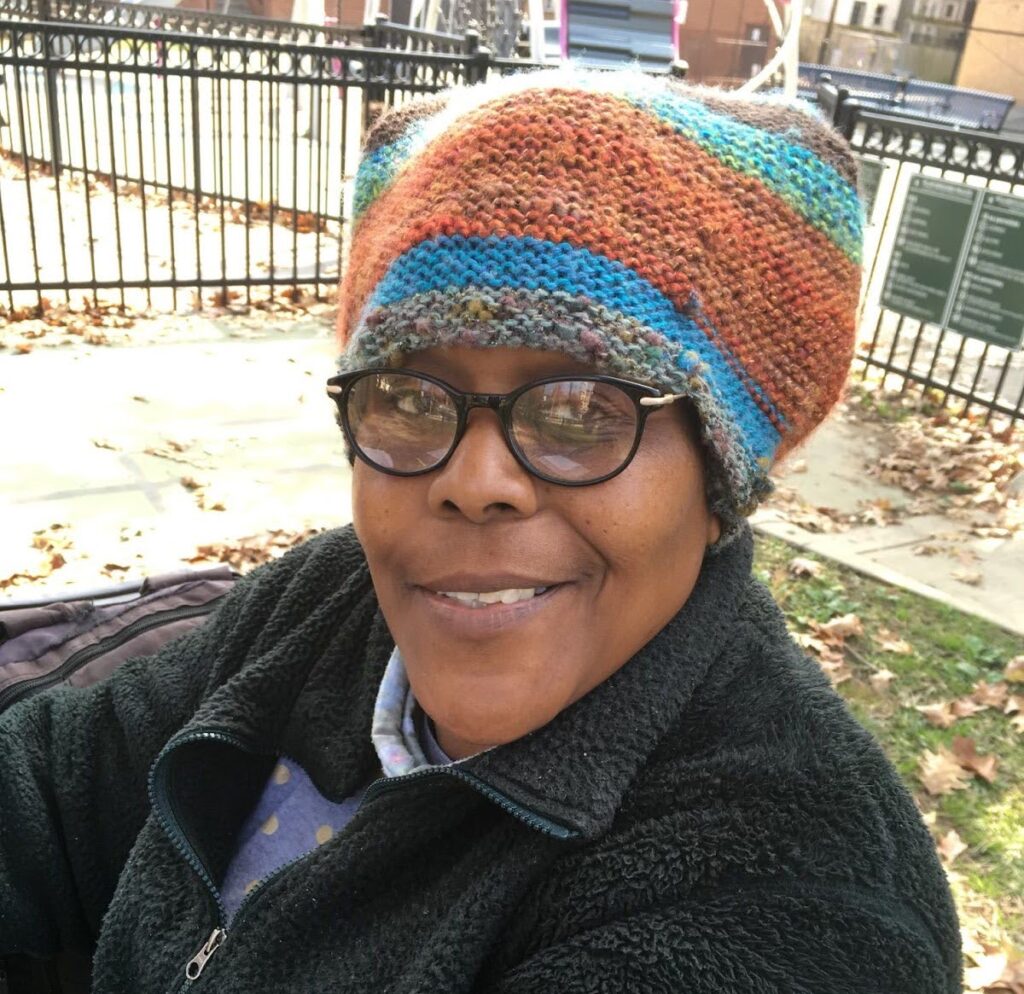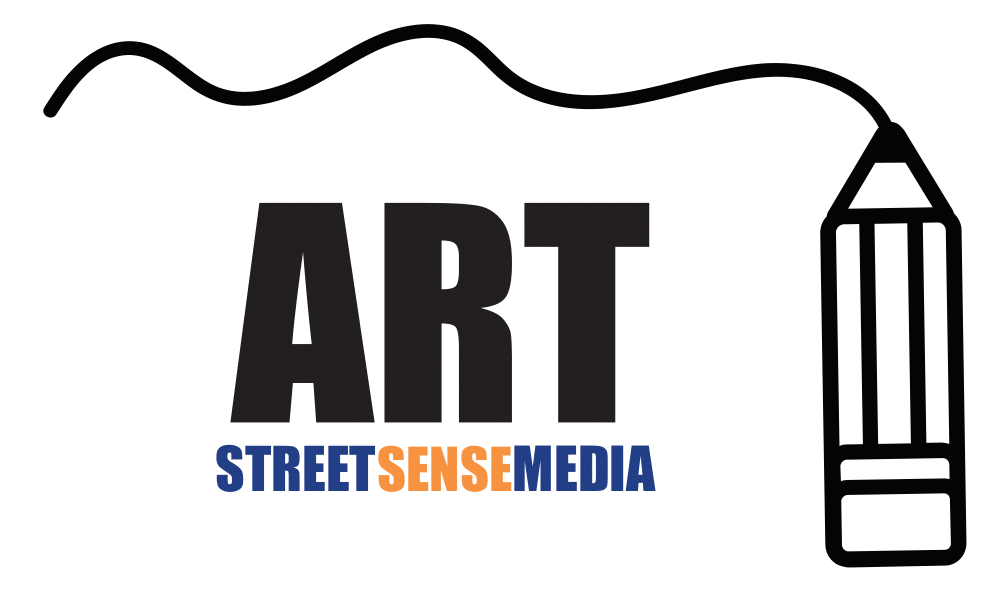Forty-three percent of the homeless youth counted in D.C’s 2015 Homeless Youth Census self-identify as LGBTQ. Many of them face unique challenges.
“A lot of the dialogue that’s happened in our culture has been talking about kids as being liabilities and victims and we need to start seeing them as assets and resources in our community,” said Sean Read on Wednesday, April 19, at Friendship Place’s annual Education and Advocacy symposium. This year, panelists discussed different issues that directly impact LGBTQ youth.
The symposium, which took place at the George Washington University, focused on the need for the District to do a more efficient and adequate job at counting homeless youth because many homeless youth are left uncounted. Panelists also discussed the necessity for policymakers, service providers and other advocates to extend the age in which they consider someone a young person. They also discussed the necessity of altering qualifications in which a young person is considered homeless. Throughout the symposium, they provided information about different resources and ways to empower homeless LGBTQ youth.
Kahlib Barton, vice chair of the Young Black Gay Men’s Leadership Initiative, said the adolescents can extend well beyond the years of 18 especially when a young person has battled with homelessness.
“At some point you have to be cognizant of the fact of things that happen to someone in adolescence then definitely plays a part in the way that they are going to act or interact in the world,” he said.
Barton said he believes that someone as old as 25 can still require the assistance of a young person. “If this person wasn’t provided with the proper tools between zero to 18 then they are still not going to be able ro ready to know how to navigate the world.” he said.
He said it is unfair that young people who have to break laws all through their childhood in order to survive that the moment they turn 18 they are penalized to the highest extent of the law.
Barton said the goal is to expand the definition of not only what it means to be a young person but also expand the definition of what it means to be a homeless youth to include more young people who are “couch surfing,” staying with a significant other and other living arrangements that are temporary and not a guarantee.
While the count does include those youth, they are still undercounted.

Dr. Eddy Ameen chair of the youth working group at D.C. Center said in an interview with Street Sense that he is hopeful that in the future the census will see improvement.
“A count is only as good as its methodology, and even really good methodology has been shown to undercount the population that’s being surveyed or not capture the full reality of their experiences,” said Ameen. “This is only our second year at it and I have faith that we are committed to continuous quality improvement.”
Ameen said he believes the data has been useful in helping the District allocate more resources to determine who has highest need for various services offered.
Leandrea Gilliam, program analyst and housing specialist from the Mayor’s Office of LGBTQ Affairs, said there needs to be more permanency in programs that assist youth into homes. Short-lived housing solutions do not take into account the future after a child turns 18. Many programs for homeless youth are geared towards children 18 years and younger.
“What do you do if you haven’t had the behavioral health care that you need to be able to survive on your own? What do you do if you don’t know how to manage money?” asked Gilliam. “These programs that we have are just on a temporary basis and we need to have that structural change to make them more permanent.”
Gilliam applauded LGBTQ Tech’s program that provides cell phones to homeless LGBTQ youth so they can look at all the resources available to them in the area. She said programs like that will make a longer-lasting impact.
“That is one of Mayor Bowser’s major frameworks. Making sure that every resident in the District of Columbia is taken care of and can have a viable and resourceful life living here,” said Gilliam.
Gilliam stressed the importance of allowing young people to have a voice in what happens to their future. She also said if the District is able to help these youth today, they could be the ones in the future to help other young people in the same way.
In addition to providing LGBTQ youth with the necessary support to survive, Read said risk management is equally as important. He said when it comes to risky behavior that jeopardizes a person’s health, such as drug use and unprotected sex, you can tell them not to do it but unfortunately that does not mean they can or will stop.
Read said that it is important to reduce the impact of harm to individuals. He said that people involved in a lot of unprotected sex or sex trafficking can receive safe-sex kits from some service providers. He also mentioned that there are some organizations in the District that do clean-needle exchanges.
“It continues to come around to the preservation and providing the basic needs of an individual,” said Read. “When we’ve done that with young people they see that we are genuinely concerned with their overall well-being.”
Read said he believes that if the physical needs of young people experiencing homelessness are met, then they will be able to think about greater change.
“[It’s] often the case that identity has been taken away or has been caused to be suppressed for an individual because they haven’t felt that they can be their true self,” said Read. “When we start to meet those basic needs we then began to see that individual for who they really are and it’s a beautiful thing”
When removed from the home and placed into foster care it is harder to place LGBTQ youth, according to Diego Sanchez, PFLAG’s director of policy.
“We are never the easiest to place: because there is more explanation there are more barriers, checking the household in a different way, checking for cultural competency,” said Sanchez, who is a trans man of color. Sanchez said he believes that if Rep. John Lewis’s Every Child Deserves a Family Act (ECDFA) became law, the foster care and adoption system would become safer and more beneficial to LGBTQ youth. ECDFA prohibits discrimination against foster children based on their sexual orientation or gender identity. It also prohibits any child welfare agency from discriminating against potential foster or adoptive families based on their sexual orientation, gender orientation, or marital status.
All the panelists agreed that a more consistent support system has to be put into place for homeless youth in the District and around the nation. It is imperative that there is someone to listen to their story and acknowledge their differences.
If you are a young person battling with homelessness in DC there are organizations whose number one priority is you:
SMYAL creates opportunities for LGBTQ youth to develop life skills and engage their community through service and advocacy.
410 7th Street SE | (202) 546-5940 | www.smyal.org
HIPS provides safe sex materials, syringe access and disposal, HIV testing, a drop-in center, and many other services.
906 H Street NE | (202) 232-8150
CASA RUBY is a bilingual multicultural LGBTQ community safe space that also provides services from hot meals to legal services counseling.
2822 Georgia Ave NW | (202) 355-5155
THE TREVOR PROJECT PROJECT provides suicide prevention and crisis intervention for LGBTQ youth. | 1-866-488-7386








